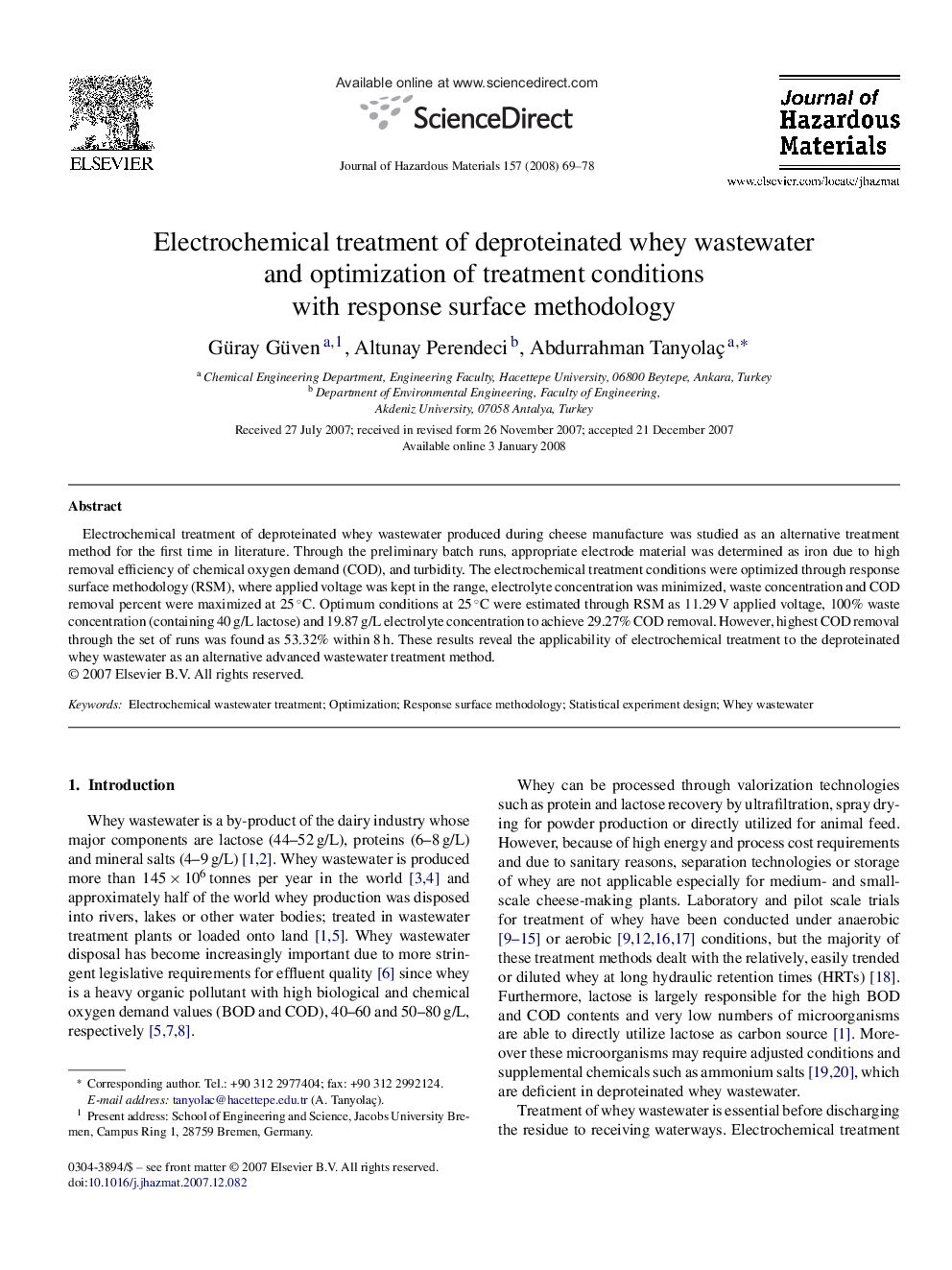| Article ID | Journal | Published Year | Pages | File Type |
|---|---|---|---|---|
| 582934 | Journal of Hazardous Materials | 2008 | 10 Pages |
Abstract
Electrochemical treatment of deproteinated whey wastewater produced during cheese manufacture was studied as an alternative treatment method for the first time in literature. Through the preliminary batch runs, appropriate electrode material was determined as iron due to high removal efficiency of chemical oxygen demand (COD), and turbidity. The electrochemical treatment conditions were optimized through response surface methodology (RSM), where applied voltage was kept in the range, electrolyte concentration was minimized, waste concentration and COD removal percent were maximized at 25 °C. Optimum conditions at 25 °C were estimated through RSM as 11.29 V applied voltage, 100% waste concentration (containing 40 g/L lactose) and 19.87 g/L electrolyte concentration to achieve 29.27% COD removal. However, highest COD removal through the set of runs was found as 53.32% within 8 h. These results reveal the applicability of electrochemical treatment to the deproteinated whey wastewater as an alternative advanced wastewater treatment method.
Keywords
Related Topics
Physical Sciences and Engineering
Chemical Engineering
Chemical Health and Safety
Authors
Güray Güven, Altunay Perendeci, Abdurrahman Tanyolaç,
